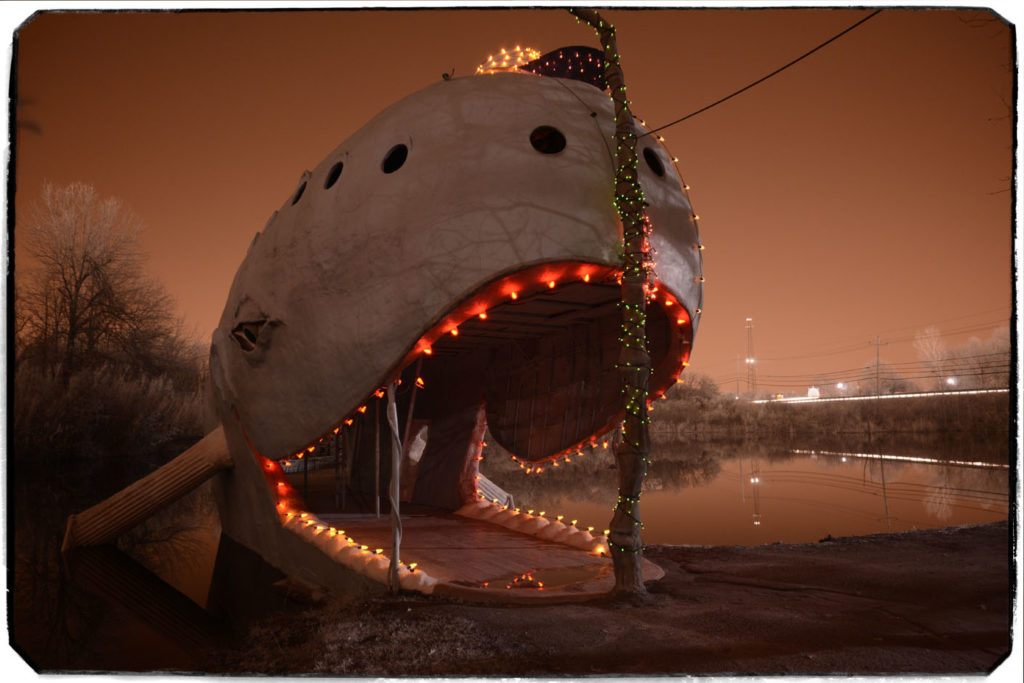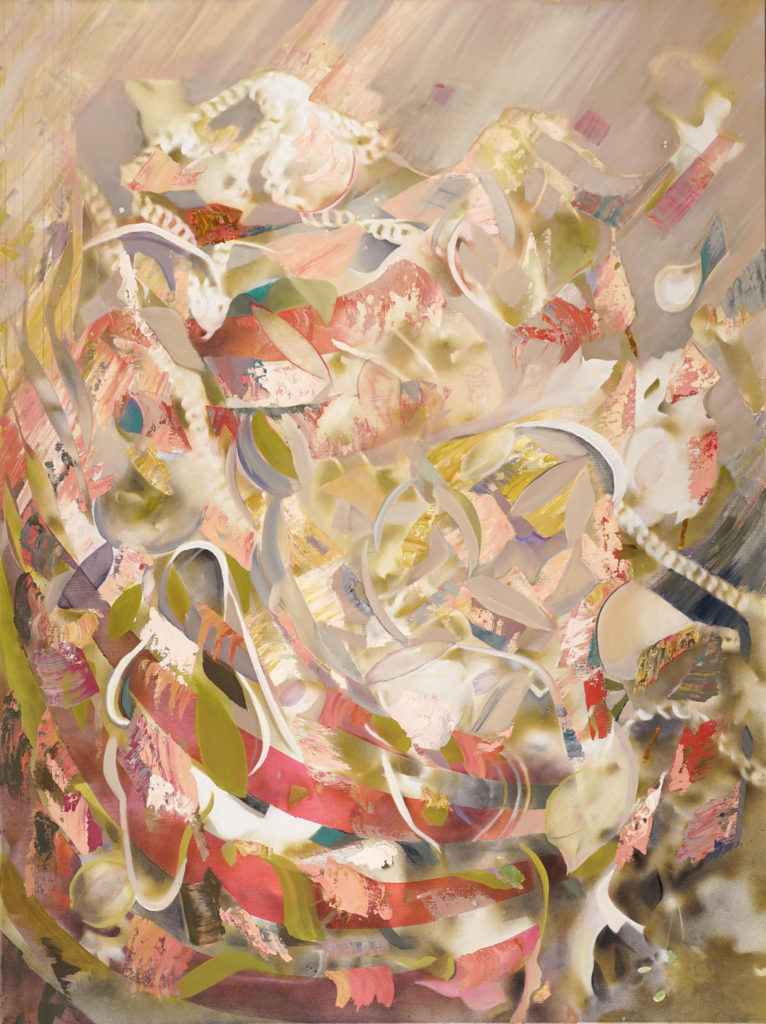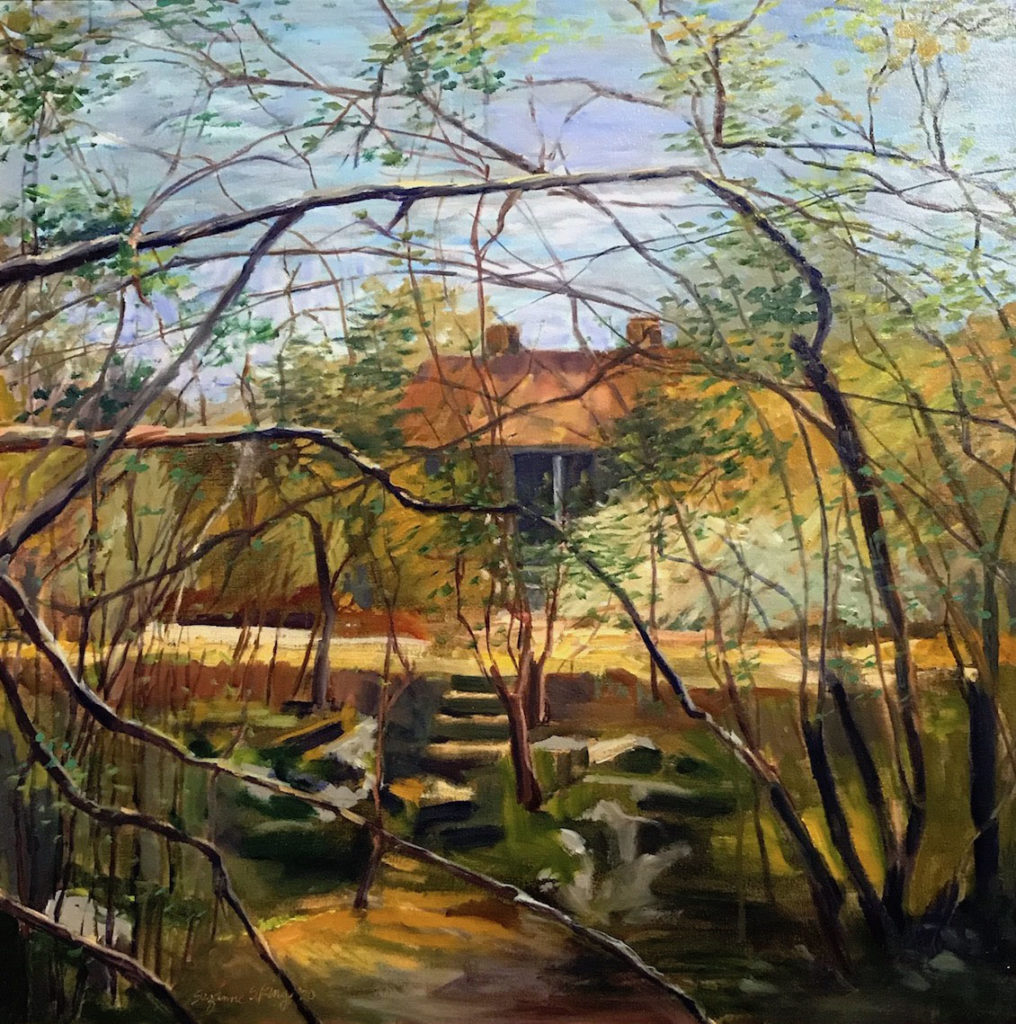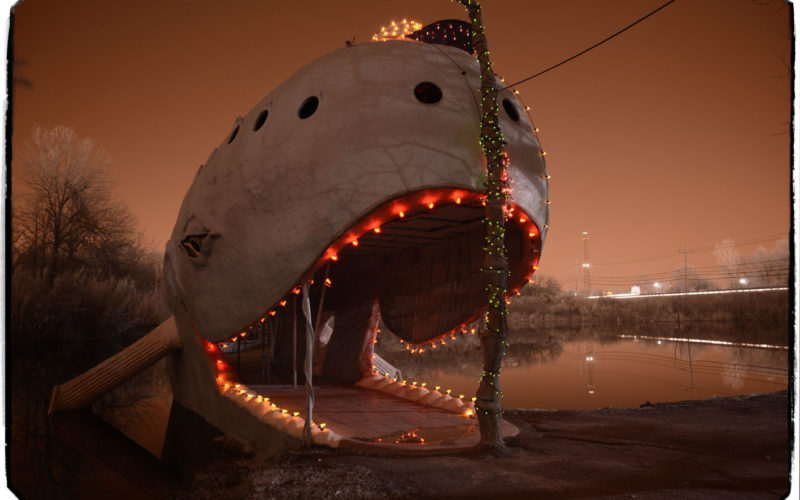JOCELYN MURPHY
jmurphy@nwadg.com
For more than seven decades, since its inception, the Fort Smith Regional Art Museum has hosted a national competitive exhibition to recognize and encourage professional artists, as well as foster art appreciation within the community. In preparing for the 2021 Invitational, the exhibition’s prompt asked artists to reflect on experiences of isolation, personal and creative restraints and the growth of social media, all born of the covid-19 pandemic.
The act of introspection, itself, also emerged as a theme among the presented works, which are on display at FSRAM through May 16. “Exploring Mindscapes: An Artist’s Reflection” offers myriad avenues of artistic expression to share artists’ perspectives on the tumultuous past year and the experiences we all endured.
“The covid-19 pandemic has highlighted issues of isolation and disconnection and the importance of mental health. In addition, the time we spend on our technological devices, the number of images and the speed with which we now see these images has rapidly accelerated,” artist Kellie Lehr points out. “The desire to connect grows stronger and yet, as we connect more online, we somehow still feel disconnected. It’s an interesting paradox.”
Facilitating that connection has been on the minds of the curatorial staff at FSRAM since the museum re-opened in June from its pandemic-forced closure.
“Art in all of its forms … is about communication,” Lou Meluso, executive director, told What’s Up! at the time. “It requires two people to be involved — the artist and the viewer. We’re missing that social connection right now and are hungry for it. This is just one aspect of that need. People are looking for relief from the sense of turmoil we’re experiencing, and they look to art.”
Chuck Davis
Rogers photographer Chuck Davis won the Invitational’s first place award, which includes a solo show at the museum next year. His work is anchored in our American experience, he explains, and often examines social stigmas and historical events which get in the way of diverse points of view.
His dramatic and whimsical — or perhaps eerie? — photograph, “Blue Whale,” finds a roadside piece of Americana off Route 66 in Catoosa, Okla. “As if a dreamlike reenactment of ‘Moby Dick’ (or its more modern depiction, ‘Finding Nemo’),” Davis muses — a beached whale beckons travelers inside its large, open mouth, enduring as one of the most memorable oddities along the historical stretch of highway. Hugh Davis (no relation) was the director of the Tulsa Zoo for 35 years, a world traveler and alligator farm owner, and erected the concrete contraption as a gift to his wife for their 34th wedding anniversary.
Imagining the mindset of this gift, wrapped in the context Route 66’s history, made for an enduring recollection, Davis says of his winning photograph.
“Reflecting on the mindset of merchants, like Hugh Davis and his wife Zelta, was definitely on my mind when submitting to the RAM Invitational,” he shares. “Why did an alligator farm operator imagine a concrete whale — eventually leaving it in perpetuity for public amusement? Such moments are plentiful on the Mother Road and [in] its mindset.”

As his biography states, observing generational changes to the area where he lives is Davis’ current photographic focus. His move to the Ozarks, an area with its own distinct culture and history, he reveals, suited him just fine:
“I’ve lived in the South and Midwest much of my adult life, so coming to Arkansas in 2010 was as comfortable as eating a barbecue sandwich,” Davis says. “During my MFA study, I frequently worked from the studio of Al Capp, the Lil’ Abner cartoonist. Capp almost single-handedly created our mindset and the way we view ‘hill people,’ and you may know his Dogpatch amusement park was only recently razed near Jasper. I wish his stigma for hillbillies had been demolished as easily as the surviving structures of Dogpatch.
“Respecting native Ozarkers, while unwinding stereotypes has become a focus of my work since arriving in Northwest Arkansas.”
Kellie Lehr
Fort Smith native Lehr won the second place distinction with her oil and acrylic work “Held.” The title, she explains has two opposite meanings: supported or hindered. It’s viewers choice and references the idea that things have more than one meaning, depending on how one looks at them.
“I’m interested in how life experience often reflects our internal thoughts, dreams, beliefs and expectations,” Lehr says of her inspirations. In her work, Lehr continues, she also gravitates to human psychology and reflections — both as a metaphor and as a visual experience. “There is an interesting connection between what’s going on inside our thoughts and what we see when we look out into the world. And this is, of course, changing all the time.”
Lehr describes her work, which generally falls between abstraction and representation, as often using organic forms from the natural landscape alongside geometric patterns or shapes. Her color palette is sometimes bright and whimsical, other times black and white. Conflicting viewpoints, compressed space, disparate patterns and fragmentation are all familiar tools in her practice.

“I see my work simultaneously as still life, landscape and space for ideation — a space suggesting many different states of mind and challenging a single point of view,” she says. That blending of the organic and the manufactured guided Lehr’s vision for “Held,” as well.
“I was interested in shifts in space created between highly diffused light layers of pixelated paint alongside thick skins of dense slabs of paint,” she details. “There are lines and forms in the painting that are connected and areas of disconnection. The colors as well are both harmonious in areas and highly discordant in others.”
Suzanne King
Third place winner Suzanne King created an oil-on-canvas work portraying the farm where her grandparents lived. “Ancestors” embodies the sense of connection, a sense of place and the memory of belonging, King explains. The piece also manifests feelings of uncertainty, wildness and smallness in how the vast area of the farm relates to the realities that we have been experiencing this past year, she continues.
“The farm is a landscape with which I am very familiar. It is a part of my mind and being (therefore my mindscape),” King shares. “As I apply the theme ‘Exploring Mindscapes: An Artist’s Reflection,’ I recall memories of stories told to me by family members along with the experiences I remember. When thinking about these stories of ancestors woven through my life, I find wisdom for living through challenging times.”

Reflecting on her time spent as a student in Northwest Arkansas at the University of Arkansas in Fayetteville and in Western Arkansas at UA-Fort Smith, King confesses that residing in the Ozarks has influenced the development of her techniques and her perception of space, quality of light and color.
“In my work there is a sense of space, light and dark values, color relationships, juxtaposition of shapes and emotion, whether I have depicted a landscape, still life or portrait,” she reveals. “Usually, I achieve this using the mediums of pastel or paint.”
More Winners
Micah Savage’s “Take a Breath of Relief” was chosen for the Purchase Award, resulting in the work — block printing ink on paper — being purchased for the FSRAM collection. Honorable mentions went to Susan Chambers for “End of Summer,” and Joseph Rodriguez-Barbera for “Reaching for Growth, Looking for Options, Perilous Advance.”
The works will remain on display through May 16, and all works will be for sale. Proceeds from sales will benefit FSRAM’s exhibits, educational programming and the participating artists.
FAQ
‘Exploring Mindscapes: An Artist’s Reflection’
WHEN — On display through May 16; Tuesday-Saturday 11 a.m.-6 p.m., Sunday 1-5 p.m.
WHERE — Fort Smith Regional Art Museum, 1601 Rogers Ave. in Fort Smith
COST — Free admission; works available for purchase
INFO — 784-2787, fsram.org
FYI
More To Come
As the first place winner of the FSRAM Annual Invitational, photographer Chuck Davis will present a full solo exhibition of his work at the Fort Smith Regional Art Museum in January.
“Fort Smith was built because of a failed government policy to relocate Native people, migrating Cherokee into ancestral lands of the Osage,” he begins. “Territorial disputes arose, with two tribes and white settlers each at odds for the same natural resources. Thus, there is a connection between the Cherokee of northwest Georgia and the Osage of Northwest Arkansas, a trail of tears between them, all punctuated by the building of Fort Smith. The solo show for FSRAM in January of 2022 gives me an opportunity to reflect on overdue reparation and respect for the lands on which we live.
“’The Wheel’ is the name of the solo show I’m contemplating for the museum. Why? Because a simple wooden wheel was used to reapportion and sell off Cherokee land in Georgia to white settlers in 1832. Unimaginable as it may be, this lottery wheel sold 160 acres for $18 each, and as that wheel spun, Indigenous relationships with the soil were forever severed.”



